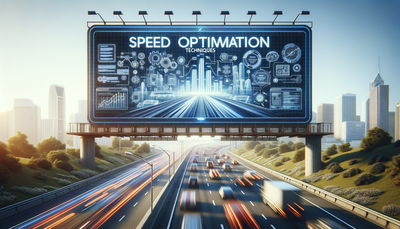Image and Media Maintenance: Keeping Your Visual Content Fresh
In the digital age, visual content plays a crucial role in engaging website visitors and conveying information effectively. This article explores the importance of image and media maintenance for keeping your website's visual content fresh and appealing. We'll delve into various strategies and best practices for optimizing images, updating alt text, managing media libraries, and ensuring your visual content remains relevant and high-quality. By implementing these techniques, you can enhance your website's performance, improve user experience, and maintain a professional online presence. Whether you're a seasoned webmaster or just starting out, this guide will provide valuable insights to help you keep your visual content in top shape.Table of Contents:

The Importance of Image Optimization
Image optimization is a crucial aspect of maintaining a high-performing website. Optimized images not only load faster but also contribute to better search engine rankings. To optimize your images, start by choosing the right file format (JPEG for photographs, PNG for graphics with transparency). Next, compress your images without sacrificing quality using tools like TinyPNG or ImageOptim.Resize your images to fit the dimensions they'll be displayed at on your website. This prevents unnecessary data transfer and improves load times. Additionally, consider implementing lazy loading, which loads images only as they come into view, further enhancing page speed. Regularly audit your image sizes and optimize any that are unnecessarily large to maintain optimal website performance.
Do you need a website? Want to build a website but don't know where to start? Our website builder is the perfect solution. Easy to use, and with the ability to customize to fit your business needs, you can have a professional website in no time.
Updating Alt Text for Accessibility and SEO
Alt text, or alternative text, is a crucial element for both accessibility and search engine optimization. It provides a text description of an image for users who can't see it, such as those using screen readers. To maintain fresh and relevant alt text, regularly review and update it to accurately describe your images.Use descriptive, concise language that conveys the image's content and purpose. Avoid keyword stuffing, but do include relevant keywords naturally where appropriate. For decorative images that don't convey information, use empty alt text (alt="") to prevent screen readers from unnecessarily reading them. By keeping your alt text up-to-date and informative, you improve both user experience and your website's SEO performance.
Effective Media Library Management
A well-organized media library is essential for efficient website maintenance. Start by implementing a consistent naming convention for your files, making them easy to identify and locate. Create a logical folder structure to categorize your media files by type, date, or purpose. Regularly review your media library and remove any unused or outdated files to keep it streamlined.Consider using metadata and tags to make your media files more searchable within your content management system. This can save time when you need to find specific images or videos for reuse or updates. Additionally, maintain backups of your media library to prevent loss of important visual assets. By keeping your media library organized and up-to-date, you'll streamline your workflow and ensure easy access to all your visual content.
Building a website with SITE123 is easy
Ensuring Visual Content Relevance
To keep your website fresh and engaging, it's crucial to regularly assess and update your visual content for relevance. Review your images and media periodically to ensure they align with your current brand identity, products, or services. Replace outdated visuals with more current ones that reflect your latest offerings or company culture.Consider seasonal updates to keep your website visually in tune with the time of year or upcoming events. For evergreen content, periodically refresh accompanying images to give returning visitors a sense of novelty. Pay attention to industry trends and incorporate new visual styles or technologies when appropriate. By maintaining relevant visual content, you demonstrate that your website is active and up-to-date, encouraging visitor engagement and trust.
Maintaining High-Quality Visuals
High-quality visuals are essential for creating a professional and credible online presence. Regularly assess the quality of your images and media, replacing any that appear pixelated, blurry, or outdated. Invest in professional photography or high-quality stock images when necessary to maintain a polished look.For user-generated content or product images, establish clear guidelines for image quality and resolution. Consider implementing an approval process for new visual content to ensure it meets your standards before publication. Regularly update product images to reflect any changes or improvements, and consider adding multiple angles or 360-degree views for a more comprehensive visual experience. By consistently maintaining high-quality visuals, you enhance your website's professionalism and appeal to visitors.
Leveraging New Media Formats
As technology evolves, new media formats emerge that can enhance user engagement and convey information more effectively. Stay informed about these developments and consider incorporating them into your website. For example, you might replace static images with interactive infographics or add short-form videos to explain complex concepts.Explore the use of 360-degree images or virtual tours for showcasing products or locations. Consider implementing WebP image format for better compression and quality. Experiment with cinemagraphs or animated SVGs to add subtle motion to your visuals without the overhead of full video files. By embracing new media formats, you can keep your website's visual content fresh, engaging, and ahead of the curve.





